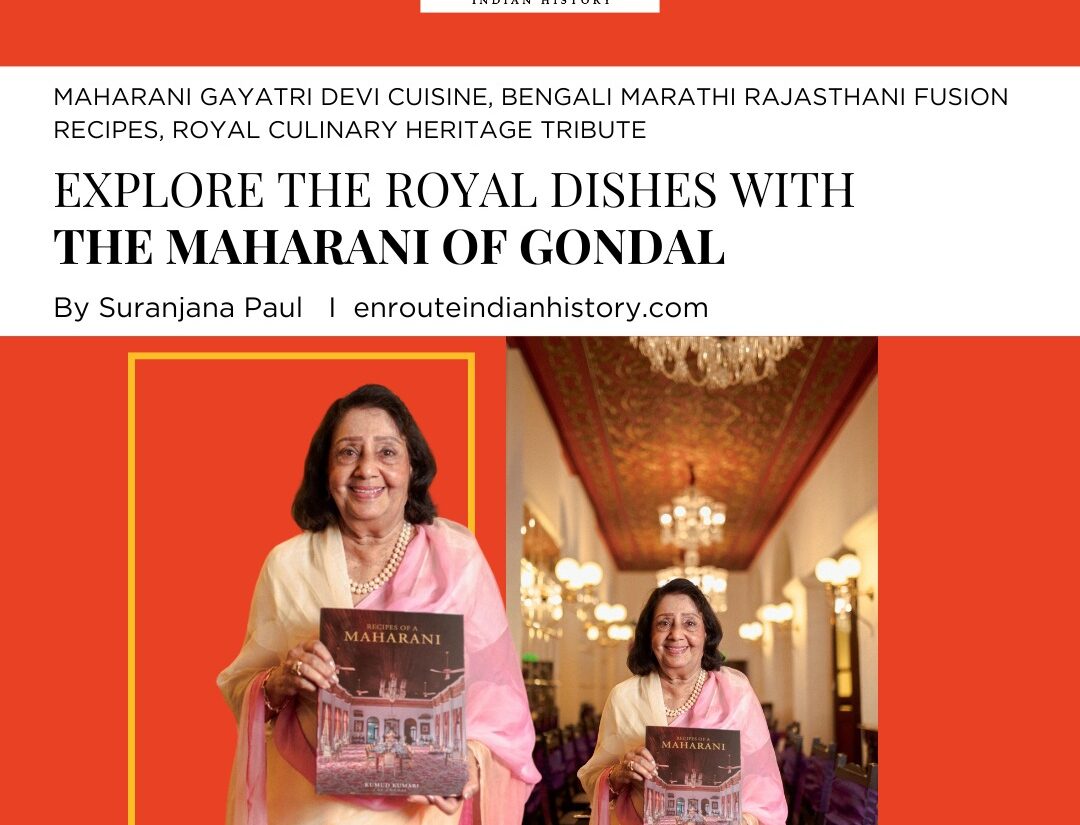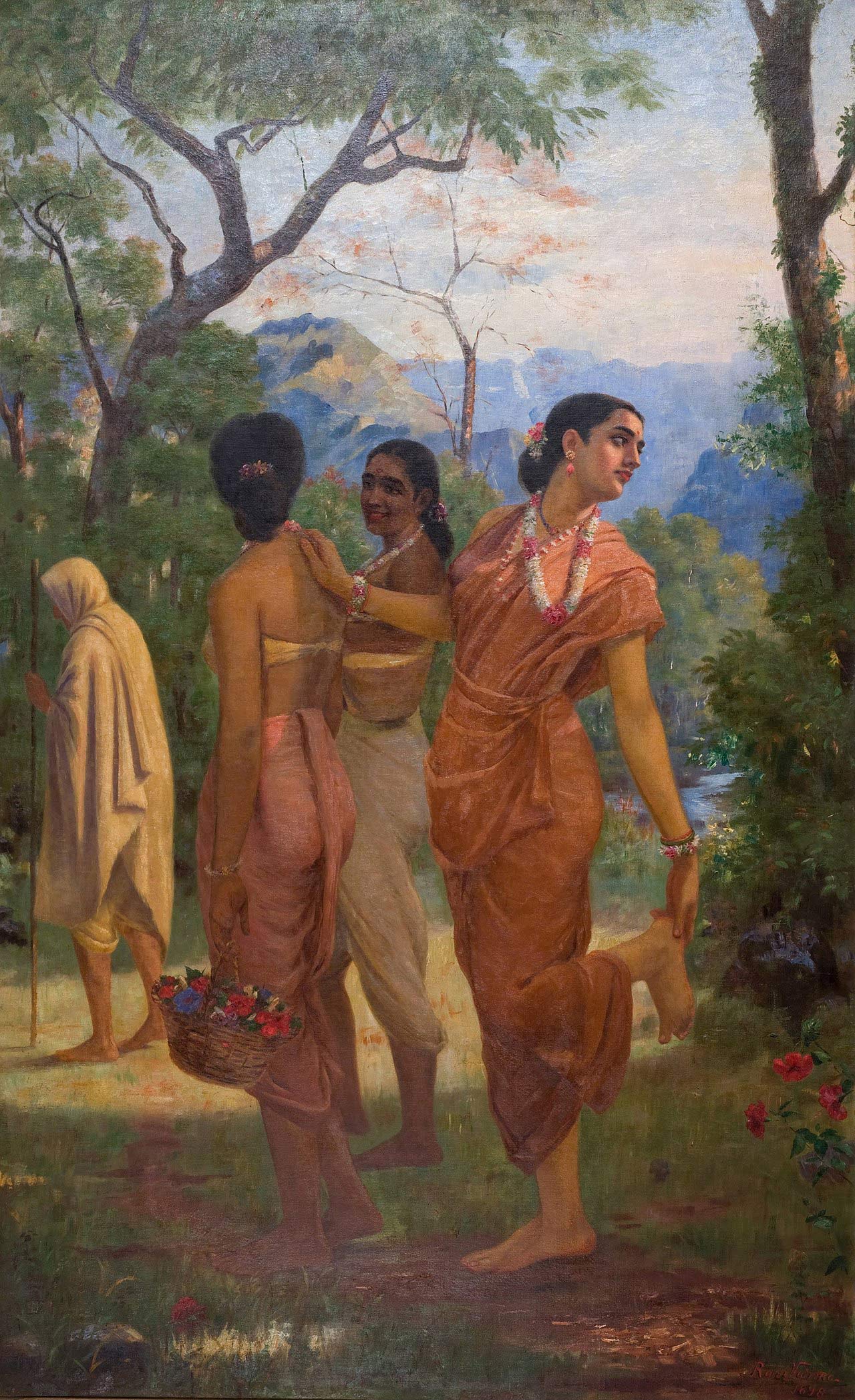
Culinary literature of India, especially cookbooks and the culinary memories from different periods helps to explore the gastronomic interest of the different parts of India and also helps to understand the food history of India along with the socio-economic condition of different parts of our country by shaping them with the help of the norms of race-gender-sexuality and class. The culinary literature not only documented the oral tradition of food but also preserved the rich food heritage of India. Through the culinary literature, readers can find the milieu of east to west, and northern to southern part of India, even, the amalgamation of Oriental food and Western food is also present in the cookbooks and culinary memories, especially in those books that consist of royal food of the different princely states of India. It needs to be noticed that most of the culinary traditions come out from the royal kitchens where they experimented with different food items and made complex cuisines because simple food indicates the survival instinct.
India has several princely states in the different parts of it and among those states, some are still popular due to their heritage royal palace hotels and the royal food. Gondal is one of those princely states in which royal food and palaces are opened for the people to enjoy and taste the royal luxury and food.
History of Gondal:
Gondal is a small city and municipality which is presently situated in Gujarat and comes under the Rajkot district. The Gondal state was established by the Jadeja dynasty in 1634 and later it became part of the Kathiawar Agency by acquiring more territories during the Bombay Presidency. Gondal has bestowed ‘first-class status’ due to the progressive outlook of Maharaja Bhagwat Singh and not only the status, but also the princely state honoured by a prestigious 11-gun salute by the British ruler. Maharaja’s progressive outlook was not for getting recognition from the British, he did too many works which were much ahead of his time. To develop his state Maharaja took several steps but in those steps abolition of all taxes, export duties, and customs, and Gondal became the only tax-free state in India that was the most celebrated one. Apart from this, reforming the administration system of the state, and building up schools, colleges, and hospitals were important works during his ruling period along with the plumbing, sewage system, rail lines, telephone cables, telegraph, and electricity lines which he introduced to Gondal. He installed electricity and sewage in a modern way by putting the lines under the ground. Maharaja also focused on women’s education in his state and he took up some strategies to increase the number of female students in the schools. Influence of the western education helped him to build a progressive figure who contributed to his people to make their lives better.
Palaces of Gondal:

Naulakha Palace, Entrance, Gondal.
(Source: Meer)
The royal family owned three palaces in Gondal and among those palaces, Naulakha is the oldest palace which was erected in the 17th century. It cost approximately nine lakh rupees at that time and this cost became the fact of naming the palace ‘Naulakha’. The fine designs and the beautiful “Jharokas” created a uniqueness that mesmerised the visitors. This palace is now converted into a museum which is open to the people. This Museum is full of rare collections of the royal family. Besides this palace, two more palaces are much newer than the Naulakha palace.

Orchard Palace, Gondal
(Source: Vogue)
Orchard Palace which is the annex of Huzoor Palace. This palace was built up in the late nineteenth century for the personal guests of the Maharaja. Now this palace is used as a heritage hotel along with the Riverside Palace which was built in 1880 for the crown prince for their residential purpose. This palace structure followed colonial architecture.

Riverside Palace, Gondal
(Source: Vogue)
Palace and royal food come hand in hand because delicious royal food is served in the heritage hotels and palaces in Gondal. The Royal family of Gondal opened their palaces for common people to enjoy the royal luxury similarly the Maharani of Gondal published a cookbook to reveal the food secret from the kitchen of the royal family. She added her own signature dishes and also talked about those dishes which she inherited from her mother. Maharani Kumud Kumari developed her interest in cooking from her diverse background. She married Gondal Maharaja and came to Kathiawar region where she grew up in Bhavnagar and her mother, Manhar Kunver whom she dedicated to her book, was from Malwa.

Maharani Kumud Kumari with her Cookbook
(Source: Vogue)
Maharani’s Book:
As already mentioned in the previous paragraph, Maharani Kumud Kumari was influenced in cooking by her diverse background, while her mother did not allow her to help her during cooking, she instructed Maharani to watch the process of her cooking. Even her maternal grandfather, Maharaja Sajjan Singh was an outstanding cook and her mother learnt many recipes from him. Not only from her diverse family background but also she was influenced by extensive travelling with her husband after her marriage.
Meat played an important role in the royal kitchen. In her, “Recipes of a Maharani: Secrets from The Gondal Palace”, she had written about different kinds of meat items. Gondal Chicken, which is the signature dish of Maharani Kumud Kumari along with Irani Mutton which she inspired by her travels. The recipe of chicken Baaganer, she took from the ancestral home of her mother. Maharani made a unique dessert recipe by using mutton, which is called Mutton ke Gulab Jamun.

Mutton ke Gulab Jamun
(Source: Indian Express, Indulge)
Mutton fruit rice, pearl pink motiya murgh, and scrambled egg curry are included in the non-vegetarian dishes. However, chicken almond is Maharani’s favourite. Besides meat recipes, several vegetarian recipes were present like okra with yoghurt or potato with dahi. Forgotten mouth-melting recipes, like Methi nu Aantiyu, and Mawa Mung Dal are there in the book. The dessert recipes are the amalgamations of Indian and western where gajar halwa is a popular Indian dish and on the other hand Fruit Fool is a British-inspired food. The pickles and chutneys section of the book consists of a recipe for Gujarati chhundo.

(Source: Indian Express, Indulge)
Most of the royal foods are cooked by using the wood fire whereas the vegetarian stew is cooked by applying the underground cooking method.
Recipe of Gondal chicken:
Ingredients
- Chicken
- Oil
- Bay leaf
- Lal mirch
- Jeera
- Chopped coriander
- Tomato
- Salt
- Haldi
Method
In a pressure cooker put oil and thereafter put bay leaf, lal mirch, and jeera one by one. Meanwhile, prick the tomatoes with a fork. After pricking the tomatoes, put them into the pressure cooker along with them, and then add a little bit of haldi and the chopped fresh coriander and salt according to the taste. Here comes the main ingredient, the chicken. After adding all the ingredients, put the chicken into the cooker, and cover it, and wait for the three whistles. This simple dish will be made without any additional water, the moisture of the chicken helps to cook the whole food.

(Source: Slurrp)
“Recipes of a Maharani: Secrets from The Gondal Palace” this cookbook consists of the 50 most popular food items from the Maharani’s kitchen. These recipes not only show the connection of Maharani Kumud Kumari with Bhavnagar and Malwa but also represent her explorer and experimental nature in food and also there is a touch of Maharani’s own life and history.
REFERENCES:
Reddy, G., 2022. In a new cookbook, the maharani of Gondal reveals recipes from a royal kitchen. Architectural Digest. 01 September, 2022. Available from: In a new cookbook, the maharani of Gondal reveals recipes from a royal kitchen (architecturaldigest.in). [Accessed 1 June 2024]
Chandani, P., 2022. Maharani Kumud Kumari of Gondal on her latest cookbook, exclusive recipes and secrets from the royal kitchen of dynastic traditions. Indian Express, Indulge.06 September 2022. Available from: Indulge Exclusive: Maharani Kumud Kumari of Gondal on her latest cookbook, exclusive recipes and sec (indulgexpress.com).[Accessed 1 June 2024]
Kaisth, D., 2019. Girls’ Education in India and the Maharaja Bhagwat Singh of Gondal. The Diplomat. 10 April 2019. Available from: https://thediplomat.com/2019/04/girls-education-in-india-and-the-maharaja-bhagwat-singh-of-gondal/. [Accessed 1 June 2024]
Chakraborty, S., 2014. The Palaces of Gondal, A Tryst With Royal Gujarat. Meer. 4 October, 2014. Available from:https://www.meer.com/en/11180-the-palaces-of-gondal. [Accessed 1 June 2024]
Pandya, P., 2022. Eat like a queen. Mid-day. 19 June, 2022. Available from:Eat like a queen (mid-day.com). [Accessed 1 June 2024]
Roy Choudhury, I., 2013. Gondal: Cultural Heritage in Gujarat. Indrosphere. 03 October, 2013. Available from: https://indroyc.com/2013/10/03/gondal/. [Accessed 1 June 2024]
Love Food, 2022. Gondal Chicken with Chef Ranveer Brar and Chef Gautam Mehrishi. 24 October, 2022. Available from: https://youtu.be/I1QNryzLrfE?si=4Ra12Us3Nzg6uP8m. [Accessed 1 June 2024]
Lakshminarasimhan, S., 2017. Cooking “India”: Identities and Ideologies in Indian Cookbooks from the Nineteenth Century to the Present Day (Master’s thesis, University of Akron). Available from: send (ohiolink.edu). [Accessed 1 June 2024]
Rana, N.K., 2022. The Perpetual Quest for ‘Authenticity’in Indian Cuisine: An Answer through History and Folklore. Digest: A Journal of Foodways and Culture, 9(1). Available from: *34627-Essay Text-89309-1-10-20220606.pdf. [Accessed 1 June 2024]
Buch, D. and Shah, M.M.P., 2021. Cookbooks–A Resource to Study Food History. Journal of Scientific Research, 65(8). Available from: DOI: 10.37398/JSR.2021.650818 [18-libre.pdf (d1wqtxts1xzle7.cloudfront.net)]. [Accessed 1 June 2024]




















